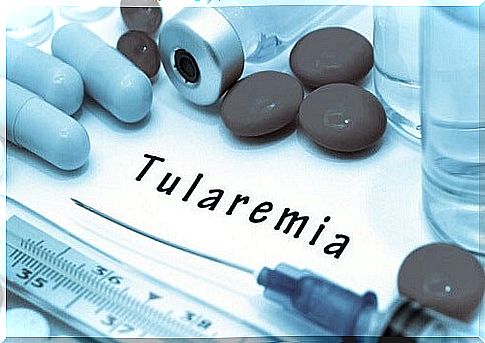Tularemia: Causes, Symptoms And Treatment

Tularemia is an infectious disease caused by the bacterium Francisella tularensis , resistant to cold climates and substances such as bleach. However, there are many other commonly used disinfectants in the home that can destroy it.
We are facing a case of anthropozoonosis, an infection that circulates among animals, but which can also be transmitted to humans in the presence of certain conditions.
The bacterium proliferates thanks to some small mammals including mice and squirrels, as well as hares and rabbits. Its worldwide distribution affects the northern hemisphere: from Europe to Asia to North America.
The disease was discovered in 1911 in California, where an outbreak was identified that led to the identification of the bacterium. To date, more than a hundred years after its discovery, tularemia is considered a real biological weapon, which is why it is mandatory by law to notify the authorities of the discovery of new cases.
Data on tularemia
Tularemia mainly affects two age groups: children between five and nine and the elderly over seventy-five. It prevails in two periods of the year: from May to August and from November to February.
Due to its mode of contagion, some people are more exposed due to their profession or their particular habits. For example:
- Gardeners : are exposed to the inhalation of bacteria.
- Veterinarians : for direct contact with animals.
- Hunters : they can come into contact with it through animal carcasses or by eating game.
Mode of contagion of tularemia
Tularemia is transmitted between animals and from them to humans, but never between people. A person with tularemia cannot infect a healthy person. For this it is not necessary to isolate the infected. Among the possible ways of transmission from animals to humans we find:
- Physical contact: the most frequent form of contagion. Humans come into direct contact with the body of the animal affected by tularemia, usually through wounds or exposed mucous membranes. Those who live in the countryside, hunters, veterinarians and farmers are more at risk. Contact can occur with live or dead animals.
- Stings: Cases of disease-carrying arthropods, such as ticks or horseflies, have been identified. Furthermore, in the last ten years, transmission by animals previously not taken into consideration, such as the crayfish, has been certified.
- Contaminated waters: it is a minor form of contagion, but not for this reason to be underestimated. In the US it is estimated that up to ten percent of infections are due to the consumption of water contaminated by the bacterium.
- Inhalation: the bacterium can be found in fine dust produced by agricultural activity. The human being can inhale the dust and allow the bacterium to attack the respiratory system.

Symptoms of the disease
The incubation period is short, usually 3-5 days; this is the time from the moment you come into contact with the bacterium and the appearance of symptoms. However, in some cases it can take up to 15 days. m Depending on how the microorganism enters the body, we can distinguish several types of this disease:
- Ulcer-glandular: it is the least common form. It occurs when the infection occurs through physical contact through the skin, causing the formation of an ulcer at the point of contact. Fever, inflammation of the lymph nodes, tiredness and headache will follow.
- Glandular: it is a variant of the ulcer-glandular but without ulcers.
- Ocular : This clinical picture is characterized by symptoms related to the eye area, including eye pain, discharge in the eyelids, redness and swelling of the soft tissues of the eyelid area.
- Oropharyngeal : is a manifestation of tularemia in the digestive system. It occurs when the infection occurs through the ingestion of infected meat or contaminated water. Subject complains of fever, sore throat, vomiting, diarrhea, and mouth ulcers.
- Pulmonary : it is pneumonia caused by the tularemia bacterium, with symptoms that include cough, fever, pain in the rib cage, lack of air.
- Typhoid : it is the least frequent manifestation, but the most serious. It involves inflammation of organs such as the spleen or liver, very high fever, and digestive disorders that cause vomiting and diarrhea.

Treatment of tularemia
Tularemia can be effectively treated with antibiotic therapy. It is a serious disease, but if detected and treated in time it can be cured.
Treatment with antibiotics can take place orally or via intramuscular or intravenous injections. Depending on the clinical picture and the physical characteristics of the patient, the attending physician will evaluate the most appropriate drug. He will be able to choose between streptomycin and gentamicin, instead if he opts for the oral route he will prescribe doxycycline.
In addition to antibiotics, the necessary measures will be taken to treat the various symptoms. Therefore, antipyretics, antiemetics and analgesics can be prescribed. Hospitalization is necessary if some organs are at risk.
Once healed, the person becomes immune to the bacterium for the rest of his life, so he does not run the risk of a new infection. Nevertheless, scientists have found cases of relapse, so the mandatory prevention measures should not be lowered even by those who have overcome the disease.
If you have come into contact with rodents, game or if you have carried out professional activities as a veterinary or farm activity and you have a fever, consult your doctor.









